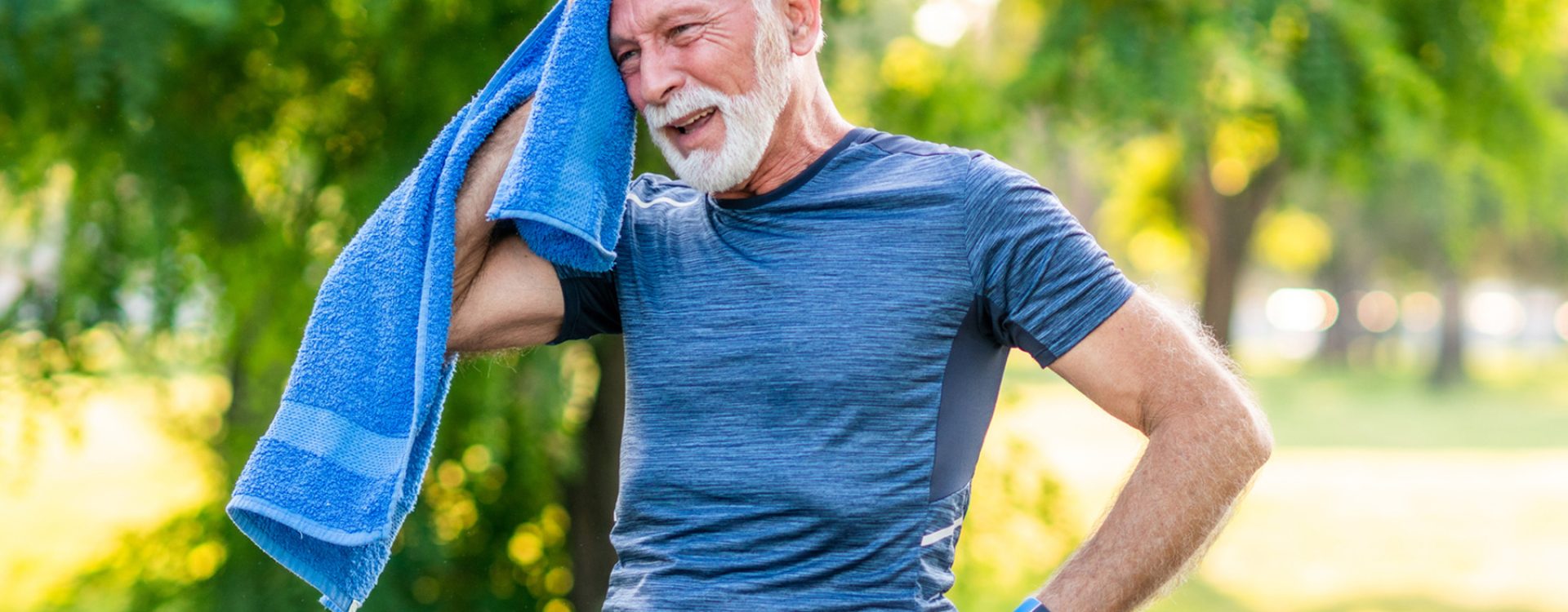Our bodies do a good job regulating our internal temperature through sweating. However, if you spend a lot of time outdoors during hot, humid weather, sometimes sweating isn’t enough to cool your body. When this happens, you are at risk for a heat-related illness.
There are four types of heat-related illnesses: heat stroke, heat exhaustion, heat cramps and heat rash. These conditions are most common during the summer months and fortunately, they are preventable.
What Causes Heat-Related Illness?
Too much time in the sun, intense exercise, dehydration, drinking too much alcohol and not acclimating yourself to hot temperatures can raise your risk of heat illness. Certain medications can also make you more susceptible.
The people at the highest risk for developing heat-related conditions are older adults, young children, those with chronic illnesses and people who are overweight.
Heat Stroke
The most dangerous heat-related illness is heat stroke. It is considered a medical emergency. If you suspect someone has heat stroke, call 911 immediately. Left untreated, it can cause damage to the heart, brain, muscles, and kidneys, which can lead to serious complications or even death.
Signs of heat stroke include a body temperature of 104 degrees or more; red, hot, damp, or dry skin; altered mental state, including confusion, agitation, dizziness, slurred speech, loss of consciousness and seizures; nausea; a headache; quick, shallow breathing; and a strong, fast pulse.
Once you have called 911, move the person indoors or into the shade. Remove their excess clothing. Try to cool their body temperature as quickly as possible – the faster the body temperature is lowered, the less risk of further injury. The best method is to submerge the person in ice water from the neck down, or place towels or sheets soaked in ice water around the body. Other methods that can help, but are less effective, include placing ice packs on their body, putting them in a cold shower, spraying them with water from a hose; or placing them in front of a fan and misting them with water.
Heat Exhaustion
Heat exhaustion is less serious than heat stroke but can still be dangerous. Symptoms of heat exhaustion include:
- a temperature of 101 to 103 degrees
- heavy sweating
- fast, weak pulse
- pale, clammy, or cold skin
- vomiting or nausea
- muscle cramps
- headache
- fainting
- dizziness
- fatigue or weakness
If a person has signs of heat exhaustion, move them indoors or to a shaded area, remove or loosen excess clothing, have them sip cool water, put them in a cool bath, or place cold, wet towels on their body. Take them to urgent care if their symptoms last longer than an hour, they are vomiting, or their symptoms get worse.
Heat Cramps
Heat cramps are painful spasms in the arms, abdomen, or legs. They can develop during intense exercise.
If you have signs of heat cramps, stop physical activity, and move indoors or to a shaded area, drink water or a sports drink, and rest until the cramps subside. Visit urgent care immediately if you have a history of heart problems, are on a low-sodium diet, or if the cramps last longer than one hour.
Heat Rash
A heat rash looks like a cluster of red, pimple-like blisters on the skin. They typically develop on the chest, elbow creases, groin, or neck.
If you have a heat rash, avoid high temperatures and sweating, keep the rash dry, and apply powder to the area.
Preventing Heat-Related Illnesses
Dress appropriately. Wear loose, breathable, light-colored clothing; a hat and sunglasses; and a broad-spectrum sunscreen with at least SPF 15. Apply 30 minutes before going outside.
Stay inside. If you don’t have air conditioning, visit a local mall or library. You can also call the health department to see if there are any heat-relief shelters nearby. Avoid spending time outside during the hottest part of the day – usually between 10 a.m. and 4 p.m.
Stay hydrated. If you are spending several hours outside, seek the shade as much as possible and take plenty of breaks to drink water or a sports drink with electrolytes.
Get acclimated. If you aren’t used to hot temperatures, but want to spend time outdoors, acclimate yourself first. For example, just go for a 10-minute walk and gradually work your way up as you become acclimated over a few days or weeks.
Never leave children or pets unattended in a vehicle. Check the car every time you get out to make sure no one is forgotten.





